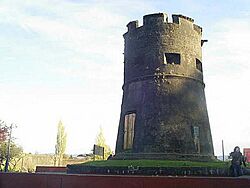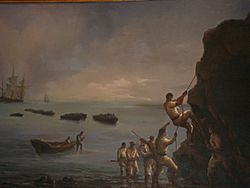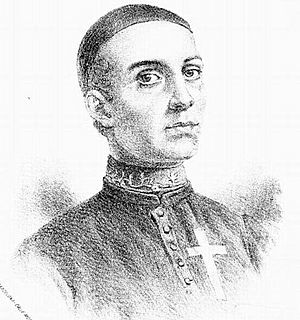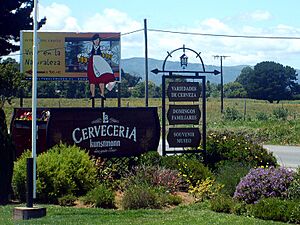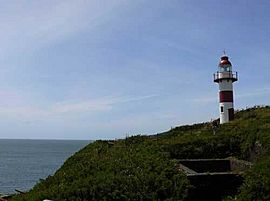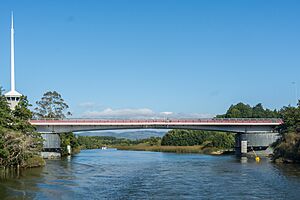Valdivia facts for kids
Quick facts for kids
Valdivia
|
||||||
|---|---|---|---|---|---|---|

From top to bottom, left to right: Valdivia waterfront; town square; Hotel Naguilán (top); Sciences Building of Austral University (bottom); Los Canelos tower; Rodolfo Amando Philippi Museum; Historical and Anthropologic Museum Maurice van de Maele; St. Francisco Church; Prochelle House; Dreams Hotel & Casino; Los Lotos Lagoon on Teja Island; Mapuche's Rewe; and Botanical Garden of Valdivia
|
||||||
|
||||||
| Nickname(s):
The City of Rivers, The Pearl of the South of Chile, Chile's Brewery Capital
|
||||||
| Motto(s):
Muy Noble y Muy Leal
("Most noble and most loyal") |
||||||
| Country | Chile | |||||
| Region | Los Ríos | |||||
| Province | Valdivia | |||||
| Founded as | Santa María la Blanca de Valdivia | |||||
| Founded | 9 February 1552 | |||||
| Named for | Pedro de Valdivia | |||||
| Government | ||||||
| • Type | Municipality | |||||
| Area | ||||||
| • Total | 1,015.6 km2 (392.1 sq mi) | |||||
| Elevation | 5 m (16 ft) | |||||
| Population
(2017 Census)
|
||||||
| • Total | 150,048 | |||||
| • Density | 147.743/km2 (382.653/sq mi) | |||||
| • Urban | 129,952 | |||||
| • Rural | 10,607 | |||||
| Demonym(s) | Valdivian | |||||
| Sex | ||||||
| • Men | 68,510 | |||||
| • Women | 72,049 | |||||
| Time zone | UTC−04:00 (CLT) | |||||
| • Summer (DST) | UTC−03:00 (CLST) | |||||
| Postal code |
5090000
|
|||||
| Area code(s) | country 56 + city 63 | |||||
| Climate | Cfb | |||||
| Website | Municipality of Valdivia | |||||
Valdivia (pronounced bal-DEE-vee-ah) is a city in southern Chile. It's named after its founder, Pedro de Valdivia. The city sits where the Calle-Calle, Valdivia, and Cau-Cau Rivers meet. It's about 15 kilometers east of the coastal towns of Corral and Niebla.
Since 2007, Valdivia has been the capital of the Los Ríos Region. It's also the capital of Valdivia Province. In 2017, the city had about 150,048 people living there. Valdivia is known for tourism, making wood pulp, forestry, metalwork, and beer production. It's also home to the Austral University of Chile, founded in 1954, and the Centro de Estudios Científicos.
Valdivia and the Chiloé Archipelago were once the southernmost parts of the Spanish Empire. From 1645 to 1740, the city was directly controlled by the Viceroyalty of Peru. They paid for the Valdivian fort system, which made Valdivia one of the strongest cities in the New World. In the mid-1800s, many German immigrants came through Valdivia to settle in the area.
In 1960, Valdivia was badly damaged by the Great Chilean earthquake. This was the strongest earthquake ever recorded, at magnitude 9.5. The earthquake caused the land to sink about 2 meters. This left large areas of fields and farms permanently flooded. Today, Valdivia has many protected wetlands both inside and outside the city.
Contents
Exploring Valdivia's Past
Ancient Times: Before Europeans Arrived (12,000 BC – 1543)
The area around Valdivia might have had people living there as early as 12,000 BC. This is based on discoveries at Monte Verde, which is south of Valdivia. This means people lived here about a thousand years before the Clovis culture in North America. Some researchers think the first people in Valdivia came to America by watercraft.
Indigenous groups lived in southern Chile during the Middle Archaic. They shared a similar tool-making style called the Chan-Chan Complex. This name comes from an archaeological site north of Valdivia.
Ainil: A Trading Hub
When Spanish explorers arrived, the Huilliche people lived in Valdivia. They spoke a language similar to Mapudungun, the Mapuche language.
A large village called Ainil was located where downtown Valdivia is today. The Huilliche called the river Ainilebu, which is now the Valdivia River. Ainil was an important trading center. It was a port on the sea and had access to the inner lands through the Cruces and Calle-Calle rivers. These rivers flow into the Valdivia River.
Ainil was like "a little Venice" because it had many wetlands and canals. Most of these waterways have been drained or filled since then. The market in Ainil traded shellfish and fish from the coast. They also traded legumes from Punucapa and other foods from San José de la Mariquina. Today, the Feria Fluvial (Riverside Market) on the Valdivia River is a reminder of this old trade.
The land around Valdivia had large plains with many people. They grew potatoes, maize, quinoa, and legumes. Some historians believe 30,000 to 40,000 people lived here in 1548. This is based on what the Spanish explorers wrote.
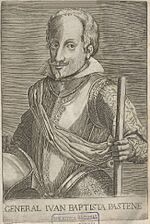
First Spanish City (1544–1604)
The first European to visit the Valdivia River was Captain Juan Bautista Pastene in 1544. He claimed the land for the Spanish king, Charles V. He named the river after the Governor of Chile, Pedro de Valdivia.
Pedro de Valdivia later traveled to the river by land. He founded the city of Valdivia in 1552, calling it Santa María la Blanca de Valdivia. It was the southernmost Spanish settlement in the Americas at that time. After building the church of Santa María la Blanca, more buildings followed. One writer called it "the second city in the Kingdom of Chile". Many important Spanish leaders were given land in Valdivia.
In 1575, a huge earthquake damaged the city. It was similar to the 1960 earthquake in terms of damage.
The Huilliche people of Valdivia did not fight the Spanish much until 1575. They even helped the Spanish fight other Mapuche groups. But in 1575, 4,000 Native Americans rebelled after returning to Valdivia.

During the 1500s, Valdivia's economy relied on farming and exporting gold. This gold came from places like Villarrica and Osorno. People in Lima called all this gold "gold from Valdivia." The city also became a big center for building ships.
After a major battle in 1598, the Mapuche and Huilliche people rebelled. They destroyed or forced the Spanish to leave all their settlements. This was known as the Destruction of the Seven Cities. On November 24, 1599, the Huilliche attacked Valdivia. They killed many people, but some were saved by ships in the harbor. The Spanish Empire's border moved north of the Bío-Bío River. Valdivia was later rebuilt, but it was a Spanish area surrounded by Huilliche land. It was one of the southernmost colonies of the Empire.
In 1602, the Spanish tried to rebuild a fort in Valdivia. But the Native Americans attacked and surrounded the fort. The Spanish ran out of food and left in 1604.
Valdivia's Ruins and Dutch Visit (1604–1645)
The Dutch governor of the East Indies, Hendrik Brouwer, heard about Valdivia. He decided to set up a base there to attack the Spanish. The Dutch were at war with Spain. They had already taken parts of Brazil from Spain and Portugal. The idea of a South American empire was exciting.
Brouwer led the expedition himself. His fleet destroyed forts and towns before reaching Corral Bay. Brouwer died in 1643, and Elias Herckman took command. Herckman occupied the ruins of Valdivia in 1643, renaming it Brouwershaven. But the Dutch didn't find the gold they expected. The local people were also hostile, so the Dutch left on October 28, 1643.
Second Spanish City (1645–1810)
Pedro Álvarez de Toledo y Leiva, the Viceroy of Peru, knew Valdivia was important. He decided to rebuild and fortify it. He helped pay for the expedition himself. The ships carried many building materials and supplies from Peru. The local government in Chile couldn't secure Valdivia because they were fighting the Mapuches.
Valdivia was placed directly under the control of the Viceroyalty of Peru from 1645 to 1740. Corral, at the river's entrance, became one of the most fortified bays at the time, with 17 forts. Valdivia's original downtown area was rebuilt in 1684.
Spanish authorities sent prisoners from Peru to build the Valdivian Fort System. Many of these prisoners were Afro-Peruvians. After serving their time, they became soldier-settlers. They often learned to speak both Spanish and Mapudungun. A census in 1749 showed that many Afro-descendants lived in the area.
In the mid-1700s, Valdivia began to grow more. Farming expanded, mostly peacefully, but sometimes there were conflicts with the Huilliche. Spanish leaders wanted to build a road connecting Valdivia to settlements further south.
Independence and Growth (1810–1959)
When Napoleon captured the Spanish king, new governments formed in Spanish America. In 1810, Valdivia's governor celebrated loyalty to the Spanish king. But some people in Valdivia, like Camilo Henríquez, wanted full independence. They took control of the city in 1811. Four months later, a group loyal to Spain took back control. They stopped trade with the rest of Chile and stayed loyal to Spain.
Even after many Spanish defeats, Valdivia and Chiloé remained loyal to Spain. In 1820, the new Chilean Navy, led by Lord Thomas Cochrane, captured Valdivia. Cochrane's land attack surprised the Spanish. When loyal troops in Valdivia heard about the fall of Corral, they looted the city and fled south.
Bernardo O'Higgins, a Chilean leader, founded the city of La Unión south of Valdivia in 1821. This helped secure the route to Osorno. In 1826, Valdivia became one of Chile's eight provinces.
On February 20, 1835, Valdivia was hit by a strong earthquake. Charles Darwin witnessed this event. He noted that there wasn't much cleared land near Valdivia, unlike what earlier Spanish explorers had described.
To boost the economy, the Chilean government started an immigration program. Thousands of Germans settled in the area. They brought new technology and knowledge to farming and industry. While many immigrants to other areas were poor farmers, Valdivia received more educated immigrants. These included political exiles and merchants.
Some immigrants started workshops and new industries. Carlos Anwandter, an exile from Germany, arrived in Valdivia in 1850. In 1858, he founded Chile's first German school. Other Germans became farmers, clearing forests for their land. Native Mapuche and Huilliche people either sold their land or were moved to reservations.
Valdivia grew with industries like shipyards, flour mills, shoe factories, and breweries. The steel mills in Corral were the largest private investment in Chile at the time. They were the first steel mills in South America. In 1891, Valdivia became a commune. Railroads reached Valdivia in 1895, and the first passenger train arrived in 1899.
In 1909, a fire destroyed 18 city blocks in downtown Valdivia. These were rebuilt with modern concrete buildings. By 1911, lumber production from native forests became the most important industry. Cattle farming also grew, and wheat was grown on cleared land. Lumber, cattle, leather, flour, and beer were exported. In 1895, the city had 8,062 people, and by 1902, it was estimated at 9,704.
Valdivia's economy continued to thrive in the first half of the 1900s. In 1917, the first "Valdivian Week" (Semana Valdiviana) was celebrated. Chile's oldest beauty contest, "Queen of The Rivers," started the same year. The city became an early tourist center in Chile. The Pedro de Valdivia Bridge was built in 1954. Valdivia became one of Chile's most important industrial centers.
However, Valdivia faced challenges. When Osorno was connected by railroad to central Chile, Valdivia lost its role as a key port. Also, the opening of the Panama Canal in 1911 meant fewer ships passed through the Straits of Magellan or visited Chilean ports.
Great Chilean Earthquake and New Region (1960–2006)
On May 22, 1960, Chile experienced the strongest earthquake ever recorded (9.5 magnitude). Valdivia was the most affected city. The earthquake caused huge tsunamis that reached Japan, the Philippines, Australia, New Zealand, and Hawaii. The old Spanish forts around Valdivia were badly damaged. The ground sank, destroying buildings, making rivers deeper, and creating new wetlands north of the city.
Large parts of the city flooded after the earthquake. A landslide near Tralcán Mountain blocked Riñihue Lake. The lake's water level rose over 20 meters, threatening to burst and destroy everything downstream. Authorities planned to evacuate the city, but many people left on their own. Workers dug a drainage channel in the landslide, and the lake's water levels slowly returned to normal. There is evidence a similar event happened in 1575. After the 1960 earthquake, Valdivia's economy and importance declined. Much of the city was destroyed, and many people left.
In 1974, the military government reorganized Chile's regions. Valdivia became a province of the Los Lagos Region, with Puerto Montt as the capital. Many people in Valdivia were unhappy with this decision. They felt Valdivia, founded in 1552, should have been the capital, not Puerto Montt, which was much newer (founded in 1853).
Since the 1980s, Valdivia's forestry industry has grown. First, wood chips were exported to Japan from Corral. Then, woodpulp was produced in Mariquina. This led to cutting down native Valdivian temperate rainforests to plant pines and eucalyptus. However, it also created new jobs. Valdivia also benefited from salmon aquaculture in the 1990s, but less than places like Puerto Montt.
Valdivia's Culture
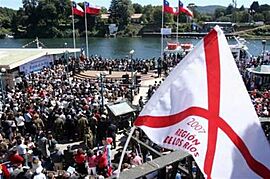
Valdivia is known for its unique features. It has a long Spanish colonial history and a later history of German settlement. Both periods left important landmarks, like the forts of Corral Bay and German-style wooden houses. Spain and Germany still have honorary consulates in Valdivia. The city is a popular tourist spot in Chile. It's often called La Perla del Sur (The Pearl of the South) or Chile's most beautiful city.
Every summer, in January and February, the city holds free cultural events along the river. These include concerts and sports. In mid-February, the celebrations end with noche Valdiviana (Valdivian night). During this night, local groups parade on decorated boats along the river. Each boat has a theme for the year. A jury chooses winners in different categories. The parade traditionally starts with a boat presenting la reina de los ríos (the queen of the rivers).
Recently, people in Valdivia have become more interested in nature and ecotourism. For example, Acción por los Cisnes is an environmental group. They protect black-necked swans and the wetlands around the city.
With the founding of Universidad Austral in 1954 and the CECS research center, Valdivia is now a major research hub in Chile. It's especially strong in areas like glaciology and ecology.
The 1960 earthquake and being placed under Puerto Montt's administration were hard for Valdivia. Many Valdivians felt unfairly treated. But the recent creation of the new, independent Los Ríos Region, with Valdivia as its capital, has helped.
Valdivia's different influences are seen in its place names. These names come from Mapuche, Spanish, Quechua, and German languages.
Spanish Colonial History
For much of the colonial period, Valdivia was like a military camp. It was a walled city surrounded by native groups. The coastal defenses and their soldiers made up a large part of the population. After many fires and earthquakes, most old buildings were destroyed. Only the military defenses remain. Valdivia's most famous historical landmarks are two towers. They were part of the old city wall built by the Spanish to defend the city. They are called Torreón Los Canelos and Torreón del Barro.
German Heritage
Since the first Germans moved to Valdivia in the 1840s, German culture has been strong. Germans in Valdivia mostly settled in Isla Teja and Collico. Before the Pedro de Valdivia Bridge was built, people on Isla Teja were isolated. It was common for children there to learn German before Spanish. Today, the German language is kept alive by the Instituto Alemán Carlos Anwandter. This is one of Latin America's oldest German schools. German descendants also formed Valdivia's oldest fire station, Germania, on Isla Teja.
German immigrants and their families formed a social club called Club Alemán. After World War II, it changed its name to Club la Unión.
Valdivia also hosts Bierfest Valdivia. This is a small, local Oktoberfest celebration. It happens in late January or February, during the summer, when many tourists visit. The main sponsor is Kunstmann, a local beer company founded by Germans.
Literature and Learning
The Valdivia Book Fair is held every year in Parque Saval. The Society of Writers of Chile also holds regular literary gatherings. Here, new books are presented, and local writers share their work with students. Several authors from the Los Ríos Region are well-known in the city.
Universities and Research
Valdivia has several public and private schools and universities. The largest and oldest is the Universidad Austral de Chile (UACh). It was founded in 1954. Its main campus is on Isla Teja. Since the 1980s, other universities have opened campuses in Valdivia. These include Universidad Arturo Prat and Universidad San Sebastián.
In the last ten years, Valdivia has become an important cultural and scientific center. The Valdivia International Film Festival is now the most important in Chile. The Centro de Estudios Científicos (CECS) research center is in a modernized, German-style hotel by the Valdivia River. Claudio Bunster, a famous physicist, is the Director of CECS.
Some research areas where CECS and UACh are well-known include:
- Agronomy
- Biophysics and molecular physiology
- Ecology
- Forestry
- Glaciology
- Physics
- Veterinary medicine
The city is surrounded by nature reserves and large areas of forests and wetlands. These, along with the many rivers, make people aware of living close to nature.
Fun Facts About Valdivia
Valdivia is known as the City of Rivers. It has also been called The Pearl of the South, The key of the South seas, Gibraltar of the Pacific, and Chile's most beautiful city. The nickname Valdilluvia combines "Valdivia" with the Spanish word for rain, lluvia. This refers to the city's rainy climate.
Valdivia's Geography
Valdivia is part of the Chilean Patagonia. Its land has wetlands and flat areas formed by rivers. Several rivers, like the Cau-Cau, Calle-Calle, and Cruces, meet near the city. They form the larger Valdivia River. The Valdivia River then flows into Corral Bay in the Pacific Ocean, about 15 km west of the city. This river system made Valdivia a trading center even before Europeans arrived.
The city itself was built on a river terrace but later expanded onto nearby wetlands. Today, hills surround the city on most sides. The lowlands of Valdivia connect to the flatlands of San José de la Mariquina to the north. Some hilly areas around Valdivia have non-native trees like Douglas-fir and eucalyptus. Other areas are used for recreation or to protect native ecosystems. Many common trees from the Northern Hemisphere, like birch and horsechestnut, grow in residential areas.
Parts of the city are built on soft soils from old wetlands or artificial fills. These areas can be damaged during earthquakes, as seen in 1960 and 2010.
Climate and Weather
Valdivia has an oceanic climate with some Mediterranean influences. The natural plants of the region are from the Valdivian temperate rainforest.
In summer (December, January, February), the average temperature is about 17°C (63°F). In winter, it drops to about 8.5°C (47°F). The average yearly temperature for Los Ríos Region is 11°C (52°F).
Valdivia gets about 1750 mm (69 inches) of rain each year. Most of this rain falls between March and October. Hail often occurs in winter, but snow is rare. The last times it snowed were in August 2020, July 2007, and August 1995. The Seven Lakes nearby help keep the humidity high, around 80% on average. Rain comes from weather systems that bring clouds and few clear days.
Less rain has caused the city's water supply from the Calle-Calle River to become salty from the coast. This was especially noticeable in March 2015 when people complained about the water's taste. Saltwater entering the rivers near Valdivia is expected to increase in the future.
Economy and Tourism
Valdivia's economy relies heavily on silviculture (growing trees), the pulp and paper industry, and other forestry activities. Large companies like CELCO have wood processing factories near Valdivia. Metallurgy (working with metals) and naval construction (building and repairing ships) are also important industries. Companies like Asenav are based here.
Agroforestry (combining farming and trees), agriculture, livestock, aquaculture (fish farming), and food processing are also important. The chocolate company (Entrelagos) and the brewing industry add to the region's image. Kunstmann is the most famous brewery in Valdivia. Beer, along with cold cut meats and sausages, is part of the city's German heritage. Trade, restaurants, and hotels are linked to tourism, which is a growing part of Valdivia's economy.
Visiting Valdivia
Valdivia is a historic tourist spot in Chile. People value its beauty, culture, and history. It's a great place to visit all year, but especially in summer (December, January, February). Tourism brings a lot of money to Valdivia then.
"Valdivian Week" (Semana Valdiviana) is a long tradition since 1917. It starts on February 9 each year to celebrate the city's anniversary. It also helps Valdivia promote itself as a tourist center. "Semana Valdiviana" includes a parade of decorated ships. This tradition started in the 1600s as a protest against the Spanish rulers. There's also a big artisan market, rides, and the election of the "queen" of Los Rios. The week ends with fireworks and theater shows on "Noche Valdiviana" (Valdivian Night).
The city center has many interesting old buildings. One popular place is the "Mercado Municipal" (municipal market). It's a local food market that's also a cultural attraction. The "Convento San Francisco" (Saint Francis Convent) and European-style buildings from the early 1900s are also popular. These buildings are now used by universities, cultural centers, and the government.
Education in Valdivia
Universities and Colleges
Valdivia has several public and private schools and universities. The largest and oldest university is the Universidad Austral de Chile (UACh). It was founded in 1954. Its main campus is on Isla Teja. Other universities have also opened campuses in Valdivia. These include Universidad Arturo Prat and Universidad San Sebastián.
Schools
Like in the rest of Chile, most of Valdivia's best schools are private. The Instituto Alemán Carlos Anwandter (Deutsche Schule Valdivia) was founded in 1858. It is Chile's second oldest German school. Other notable private schools are Windsor School and Colegio San Luis de Alba. Among public schools, Instituto Salesiano de Valdivia and Liceo Rector Armando Robles Rivera have achieved good results.
Sports in Valdivia
Valdivia has places for playing football, tennis, rowing, rugby, golf, swimming, and basketball. Rowing is popular, with three clubs in Valdivia. Valdivian rowers Cristian Yantani and Miguel Cerda won first place in a world championship in 2002.
Club Deportivo Valdivia is Valdivia's main basketball team. They play in Chile's first division, DIMAYOR. They won the 2001 season. Valdivia hosted the South American Men's Basketball Championship in 1977 and 2001.
The football club Club Deportivo Deportes Valdivia was founded in 2003. As of 2013, they play in the Primera B (Second Division).
Getting Around Valdivia
Roads and Bridges

Most of Valdivia is on the south side of the Valdivia and Calle-Calle Rivers. Other parts of the city, like Isla Teja and Las Animas, are connected by bridges. The main ways to enter the city are the Calle-Calle Bridge from the north and a southern route. Both connect the city to the Pan-American Highway.
The Calle-Calle Bridge was the first bridge built in the city. It connects Valdivia with Las Animas. The Pedro de Valdivia Bridge was built in 1954. It connects the city with Isla Teja, where many German immigrants once lived. During the Great 1960 Valdivia earthquake, only the smaller Caucau Bridge was destroyed. Other bridges were repaired and are still used. In 1987, the Río Cruces Bridge was opened. This made the coastal town of Niebla and other areas accessible by road. The Calle-Calle Bridge was made larger in the 1990s.
The new Caucau bridge was meant to offer a faster way from the city center to the Pichoy airport. However, it had construction problems and was unusable for a while. It has since been fixed.
Waterways
Before highway bridges were built, Valdivia's economy and people relied on boats on the rivers. But with more bridges and highways, the river became less important for transport. Today, the rivers are used by commercial ships built or repaired at Asenav, a major shipyard. Tourist boats also use the rivers. Some places reached by tourist boats include Mancera Island and Punucapa.
Fishing boats also travel inland from the coast to the River Market. Today, only one ferry is still running, the Niebla–Corral line. It's much faster to reach Corral by ferry than by road.
Recently, a new private project called "Los Solares" started. It uses solar-powered river taxis on the Valdivia River. This project is called Transporte Fluvial Sustentable (TFS), which means "Sustainable Water Transportation." The company has three river taxis and a small floating village. This village includes a pier, a café, and offices. It makes its own electricity and water and treats its wastewater.
Airports
The city is mainly served by Pichoy Airport. It's about 32 km northeast of the city. The smaller Las Marías Airport is closer but used mostly by small planes. No airlines operate there.
Sister Cities
Valdivia has connections with other cities around the world:
| Country | City | State / Region | Since |
|---|---|---|---|
| Argentina | Neuquén | Neuquén Province | 2003 |
| Romania | Cluj-Napoca | Cluj County | 2009 |
| United States | Mount Pleasant | Michigan | |
| United States | Tacoma | Washington | |
| Australia | Hobart | Tasmania | |
| Germany | Hamburg | Hamburg | |
| Spain | Ateca | Aragon |
Images for kids
-
Libertad Walk & Valdivia cathedral
-
UACh Botanical Garden
-
Sea lions by the riverside market
-
An obelisk
-
Universidad Austral de Chile housing
-
Haverbeck Canal of the Valdivia River
 |
Mariquina | Máfil |  |
|
| Pacific Ocean | Los Lagos | |||
| Corral | Paillaco |
See also
 In Spanish: Valdivia para niños
In Spanish: Valdivia para niños






